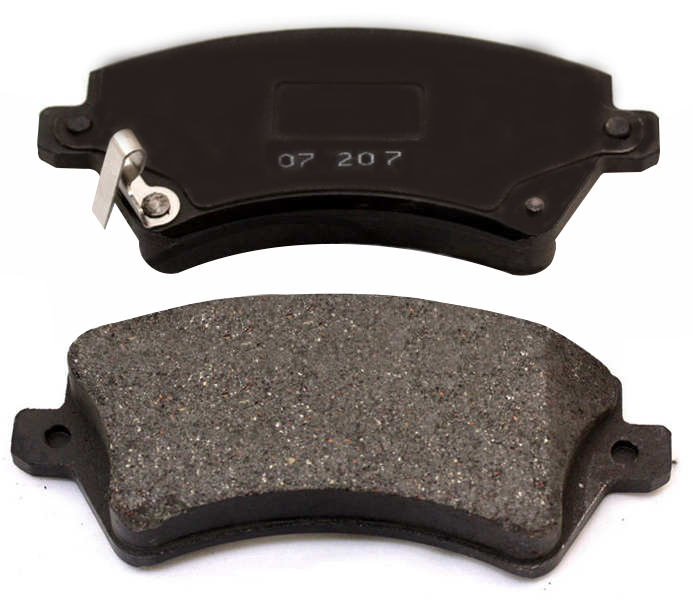Explain the brake system of the car in detail
The car can run on the road because of the rotation of the wheels. When the car is about to stop, what should we do? It is impossible for the driver to put his feet on the ground to stop the car from moving forward like in the cartoon. At this time, he has to rely on the brake device on the car to reduce the speed of the car and stop it.
The brake device produces friction between the brake pads and the wheel drum or disc, and in the process of friction, the kinetic energy of the car is converted into heat energy and consumed. There are two types of common brake devices: "drum brake" and "disc brake". Their basic features are as follows:
1. Drum brakes
Two semicircular brake pads are installed inside the wheel hub, and the "leverage principle" is used to push the brake pads to make the brake pads contact with the inner surface of the wheel drum to cause friction.
working principle
Drum brakes have been used in automobiles for nearly a century, but due to their reliability and powerful braking force, drum brakes are still configured on many models (mostly used for rear wheels). Drum brakes use hydraulic pressure to push the brake pads installed in the brake drum outward, so that the brake pads rub against the inner surface of the brake drum that rotates with the wheels, thereby producing a braking effect.
The inner surface of the brake drum of the drum brake is the position where the brake device generates the braking torque. In the case of obtaining the same braking torque, the diameter of the brake drum of the drum brake device can be much smaller than the brake disc of the disc brake. Therefore, in order to obtain powerful braking force, the large-scale vehicle with heavy load can only install drum brakes in the limited space of the wheel rim.

Simply put, the drum brake is a brake device that uses the stationary brake pads in the brake drum to rub against the brake drum that rotates with the wheels to generate friction to reduce the speed of the wheels.
Advantages of drum brakes
1. It has the function of automatic braking, so that the braking system can use lower oil pressure, or use a brake drum with a diameter much smaller than that of the brake disc;
2. The hand brake mechanism is easy to install. Some models with disc brakes on the rear wheels will install a drum brake hand brake mechanism at the center of the brake disc;
3. The processing and composition of parts are relatively simple, and the manufacturing cost is relatively low.
Disadvantages of drum brakes
1. The diameter of the brake drum of the drum brake will increase after being heated, which will cause the stroke of the brake pedal to increase, and the brake response is not as expected. Therefore, when driving a vehicle with drum brakes, it is necessary to avoid the phenomenon of thermal fading of the brake pads due to high temperature caused by continuous braking;
2. The response of the braking system is slow, and the pedaling force of the brakes is difficult to control, which is not conducive to high-frequency braking actions;
3. The structure is complex and there are many parts, and the brake clearance must be adjusted, making maintenance difficult.
2. Disc brake
The brake calipers control the two brake pads to clamp the brake disc on the wheel. When the brake pads grip the disc, there is friction between the two.
Recommended article:Automobiles & Motorcycles
Exploring the Distinctions: E-Scooter vs. E-Moped
What should be paid attention to in the process of disassembling the automobile leaf spring
How EPDM rubber sealing strips provide superior protection against the elements
How to replace an oil seal on a truck?
Do more expensive oil filters work better?
Who owns Crestron?
When the car is driving on a slippery or icy low-friction road, if excessive braking occurs, the wheels will be locked by the brake device and lose grip, causing the vehicle to lose the ability to control the direction. In order to enable the vehicle to effectively control the direction of travel on such dangerous roads, the ABS "anti-lock braking system" was developed. The increasingly powerful ABS "anti-lock braking system" can also make TCS (Traction Control System) "tracking control system" and VSC (Vehicle Stability Control) "vehicle stability control system" (equivalent to ESP) to control the tracking performance of the vehicle while driving, and to control the stability of the vehicle when cornering.
working principle
Disc brakes use a stationary brake disc to clamp the brake disc that rotates with the tire to generate friction, so that the wheel rotates at a lower speed. When the brake pedal is depressed, the piston in the master cylinder is pushed, which builds up pressure in the brake fluid circuit. The pressure is transmitted to the piston of the brake cylinder on the brake caliper through the brake fluid. After the piston of the brake cylinder is under pressure, it will move outward and push the brake pads to clamp the brake disc, so that the brake pads will rub against the brake disc to Reduces wheel speed to slow or stop the car.
Advantages of disc brakes
1. The heat dissipation of the disc brake is better than that of the drum brake, and it will not cause the brake to fade and cause the brake to fail when the brake is stepped on continuously;
2. The size change of the brake disc after heating does not increase the stroke of the brake pedal;
3. The disc brake system responds quickly and can perform high-frequency braking actions, so it is more in line with the needs of the ABS system;
4. Disc brakes do not have the automatic braking effect of drum brakes, so the braking force of the left and right wheels is relatively average;
5. Due to the better drainage of the brake disc, it can reduce the situation of poor braking caused by water or sediment;
6. Compared with drum brakes, disc brakes are simple in structure and easy to maintain.
Disc Brake Disadvantages
1. Because there is no automatic braking effect of drum brakes, the braking force of disc brakes is lower than that of drum brakes;
2. The friction area between the brake pad and the brake disc of the disc brake is smaller than that of the drum brake, so that the braking force is also relatively small;
3. In order to improve the above-mentioned shortcoming of disc brakes, a larger stepping force or oil pressure is required. Therefore, it is necessary to use a brake disc with a larger diameter, or increase the oil pressure of the brake system to increase the braking force;
4. The hand brake device is not easy to install. Some models with disc brakes on the rear wheels add a set of drum brake hand brake mechanisms for this purpose;
5. The wear of the brake pads is relatively large, so the frequency of replacement may be high.
crestron@groups.io | updating firmware from script
6 Types of Weather Stripping You Should Consider for Your Doors
How much does it cost to replace a radiator?
Truck and trailer parts & accessories
How to choose semi truck tires?
Money Saving Tips
Advantages of efficient design of electrical and electronic equipment






